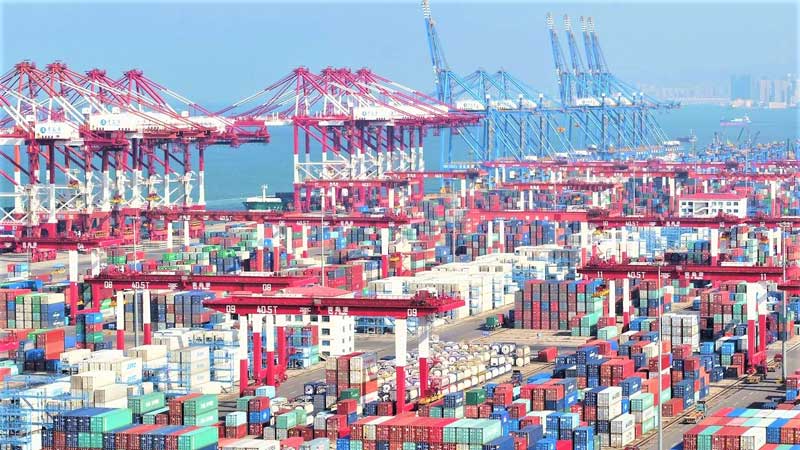

BEIJING: China’s exports expanded more than expected last month as key markets eased virus containment measures, official data showed on Monday, but imports unexpectedly shrank despite a push to boost domestic demand.
Overseas shipments have been hit less than feared by the pandemic, thanks to global demand for medical supplies but economists cautioned that a resurgence in new infections in some regions meant the outlook remained uncertain.
Exports spiked 9.5 per cent on-year in August, the Customs Administration said, beating the 7.5 per cent prediction of a Bloomberg news poll of analysts.
Slowing export growth was “something that we need to watch for”, Iris Pang, ING chief economist for Greater China.
She added that export growth was patchy across different sectors — while medical equipment and integrated circuits saw strong improvement over the first eight months, shipments of clothing and shoes remained in double-digit decline in the same period.
Tommy Xie, head of Greater China research at OCBC Bank, added that exports to the United States remained relatively strong, in part “due to frontloading” with rising concerns over US-China tensions.
Imports, which collapsed in May but have since improved, contracted 2.1 per cent — much worse than the 0.5 per cent growth tipped by analysts. But economists said the outlook is less grim once price effects are adjusted for, with Julian Evans-Pritchard, senior China economist at Capital Economics, estimating import volumes rose 9.5 per cent from a year ago.
Customs data showed that imports of meat have seen the biggest spike, rising 73.4 per cent on-year from January to August.
Monday’s data also showed that China’s trade surplus with the US surged by more than a quarter last month.
Tensions between the US and China have escalated on various fronts, including Beijing’s handling of the pandemic, its policies in Xinjiang and Hong Kong, and on technology.
But top negotiators from both sides last month agreed to push ahead with the phase one trade deal signed in January, which obliges China to import an additional $200 billion in American products over two years.
HSBC economist Chen Jingyang said in a recent report that agricultural imports are likely to remain on the rise “on the back of the fulfilment of the phase one deal with the US.” — AFP
Oman Observer is now on the WhatsApp channel. Click here



